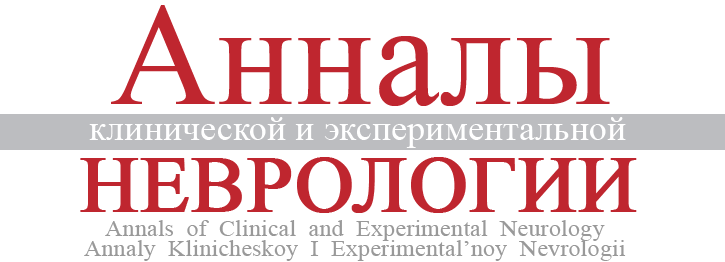Experimental evaluation of bioequivalenceт of the original and generic peptide drugs in multiple sclerosis
- Authors: Ryabtseva M.S.1, Neugodova N.P.1, Batuashvili T.A.1, Simutenko L.V.1
-
Affiliations:
- Scientific Centre for Expert Evaluation of Medical Products
- Issue: Vol 12, No 2 (2018)
- Pages: 39-44
- Section: Reviews
- URL: https://www.annaly-nevrologii.com/journal/pathID/article/view/527
- DOI: https://doi.org/10.18454/ACEN.2018.2.6
- ID: 527
Cite item
Full Text
Abstract
Multiple sclerosis is a chronic, widespread neurodegenerative disease, which is accompanied by a considerable degree of disability and requires lifelong drug therapy. In this regard, the relevant objective for the production of generic drugs for treating multiple sclerosis, so-called generics, is to ensure their quality to be at the level of the original forms. This article provides an overview of methods for determining the comparability of generics and original drugs for major groups of medications used in the treatment of multiple sclerosis: glatiramer acetate preparations, mitoxantrone, monoclonal antibodies, immunomodulating agents, and preparations based on interferon-β. Experimental allergic encephalomyelitis, a standard model for verifying specific activity of glatiramer acetate preparations, was used as an example to analyze factors that impair the consistent assessment of generics. Approaches to standardization of methods for monitoring the effectiveness of medications of this group were suggested.
About the authors
Marya S. Ryabtseva
Scientific Centre for Expert Evaluation of Medical Products
Author for correspondence.
Email: infantes@yandex.ru
Russian Federation, Moscow
Natalya P. Neugodova
Scientific Centre for Expert Evaluation of Medical Products
Email: infantes@yandex.ru
Russian Federation, Moscow
Tamara A. Batuashvili
Scientific Centre for Expert Evaluation of Medical Products
Email: infantes@yandex.ru
Russian Federation, Moscow
Ludmila V. Simutenko
Scientific Centre for Expert Evaluation of Medical Products
Email: infantes@yandex.ru
Russian Federation, Moscow
References
- Buzzard K.A., Broadley S.A., Butzkueven H. What do effective treatments for multiple sclerosis tell us about the molecular mechanisms involved in pathogenesis? Int J Mol. Sci 2012; 13(10): 12665-12709. doi: 10.3390/ijms131012665. PMID: 23202920.
- Kuzina E.S. Ubiquitin-independent proteolysis of the main myelin protein and its role in the development of experimental autoimmune encephalomyelitis. dis. ... cand. chem. science. Moscow; 2015. 113 p. http://www.chem.msu.ru/rus/theses/2015/2015-02-26-kuzina/fulltext.pdf. (In Russ.)
- Teitelbaum D., Aharoni R., Sela M., Arnon R. Cross-reactions and specificities of monoclonal antibodies against myelin basic protein and against the synthetic copolymer 1. Proc Natl Acad Sci USA 1991; 88(21): 9528-9532. doi: 10.1073/pnas.88.21.9528. PMID: 1719533.
- Betaferon. http://www.rlsnet.ru/tn_index_id_6393.htm (In Russ.)
- Buttmann M., Rieckmann P. Interferon-beta1b in multiple sclerosis. Exp Rev Neurotherapeutics 2007; 7(3): 227–239. doi: 10.1586/14737175.7.3.227. PMID: 17341170.
- Kovarik P., Sauer I., Schaljo B. Molecular mechanisms of the anti-inflammatory functions of interferons. Immunobiology 2007; 212 (9–10): 895–901. doi: 10.1016/j.imbio.2007.09.011. PMID: 18086388.
- Feng X., Yau D., Holbrook C., Reder A.T. Type I interferons inhibit interleukin-10 production in activated human monocytes and stimulate IL-10 in T cells: implications for Th1-mediated diseases. J Interferon Cytokine Res 2002; 22(3): 311–319. doi: 10.1089/107999002753675730. PMID: 12034038.
- Hartung H.P., Gonsette R., König N. et al. Mitoxantrone in progressive multiple sclerosis: a placebo-controlled, double-blind, randomised, multicentre trial. Lancet 2002; 360 (9350): 2018–2025. doi: 10.1016/S0140-6736(02)12023-X. PMID: 12504397.
- Rituximab. http://www.rlsnet.ru/mnn_index_id_2695.htm. (In Russ.)
- Cross A.H., Stark J.L., Lauber J. et al. Rituximab reduces B cells and T cells in cerebrospinal fluid of multiple sclerosis patients. J Neuroimmunol 2006; 180(1–2): 63–70. doi: 10.1016/j.jneuroim.2006.06.029. PMID: 16904756.
- Ransohoff R.M. Natalizumab for multiple sclerosis. N Engl J Med 2007; 356(25): 2622–2629. doi: 10.1056/NEJMct071462. PMID: 17582072.
- Tanasescu R., Ionete C., Chou I.J., Constantinescu C.S. Advances in the treatment of relapsing-remitting multiple sclerosis. Biomed J 2014; 37(2): 41–49. doi: 10.4103/2319-4170.130440. PMID: 24732658.
- Milikhina N.V. The study of the humoral link of specific immunity in the experimental model of multiple sclerosis - allergic encephalomyelitis. In: Scientific community of students of the XXI century. Natural Sciences. Materials of the XXIX International Stud. Sci. and Pract. Conference. Novosibirsk; 2015: 3(28): 18–24. (In Russ.)
- Zavalishin I.A., Eliseeva D.D. Pathogenetic therapy of multiple sclerosis Lech Vrach 2009; (9): 43–46. (In Russ.)
- Gusev E.I., Demina T.L., Khachanova N.V. Comparative analysis of beta-interferons used for the treatment of multiple sclerosis. Neyroimmunologiya 2003; (1): 45–50. (In Russ.)
- Copaxone prescribing information https://www.copaxone.com/Resources/pdfs/PrescribingInformation.pdf
- Adamus G., Amundson D., Vainiene M. et al. Myelin basic protein specific T-helper cells induce experimental anterior uveitis. J Neurosci Res 1996; 44(6): 513–518. doi: 10.1002/(SICI)1097-4547(19960615)44:6<513::AID-JNR1>3.0.CO;2-E. PMID: 8794942.
- Hernández-Pedro N.Y., Espinosa-Ramirez G., de la Cruz V.P. et al. Initial immunopathogenesis of multiple sclerosis: innate immune response. Clin Dev Immunol 2013; 2013: 413465. doi: 10.1155/2013/413465. PMID: 24174969.
- Tsunoda I., Fujinami R.S. Two models for multiple sclerosis: experimental allergic encephalomyelitis and Theiler’s murine encephalomyelitis virus. J Neuropathol Exp Neurol 1996; 55(6): 673–686. doi: 10.1097/00005072-199606000-00001 . PMID: 8642393.
- Pivneva T.A. Mechanisms of demyelination in multiple sclerosis. Neyrofiziologiya 2009; 41(5): 429–437. (In Russ.)
- Baker D., Jackson S.J. Models of multiple sclerosis. ACNR 2007; 6: 10-12. http://www.acnr.co.uk/JF07/ACNR_JF07_review_model.pdf
- Dal Canto M.C., Melvold R.W., Kim B.S., Miller S.D. Two models of multiple sclerosis: experimental allergic encephalomyelitis (EAE) and Theiler's murine encephalomyelitis virus (TMEV) infection. A pathological and immunological comparison. Microsc Res Tech 1995; 32(3): 215–229. doi: 10.1002/jemt.1070320305. PMID: 8527856.
- Marques A., Müller S. Mouse models of autoimmune diseases. Current Drug Discov Technol 2009; 6(4): 262–269. doi: 10.2174/157016309789869047 PMID: 20025594.
- Karkishchenko N.N., Gracheva S.V. (ed.) Guidance on laboratory animals and alternative models in biomedical research. Мoscow: Profile-2С; 2010. (In Russ.)
Supplementary files








